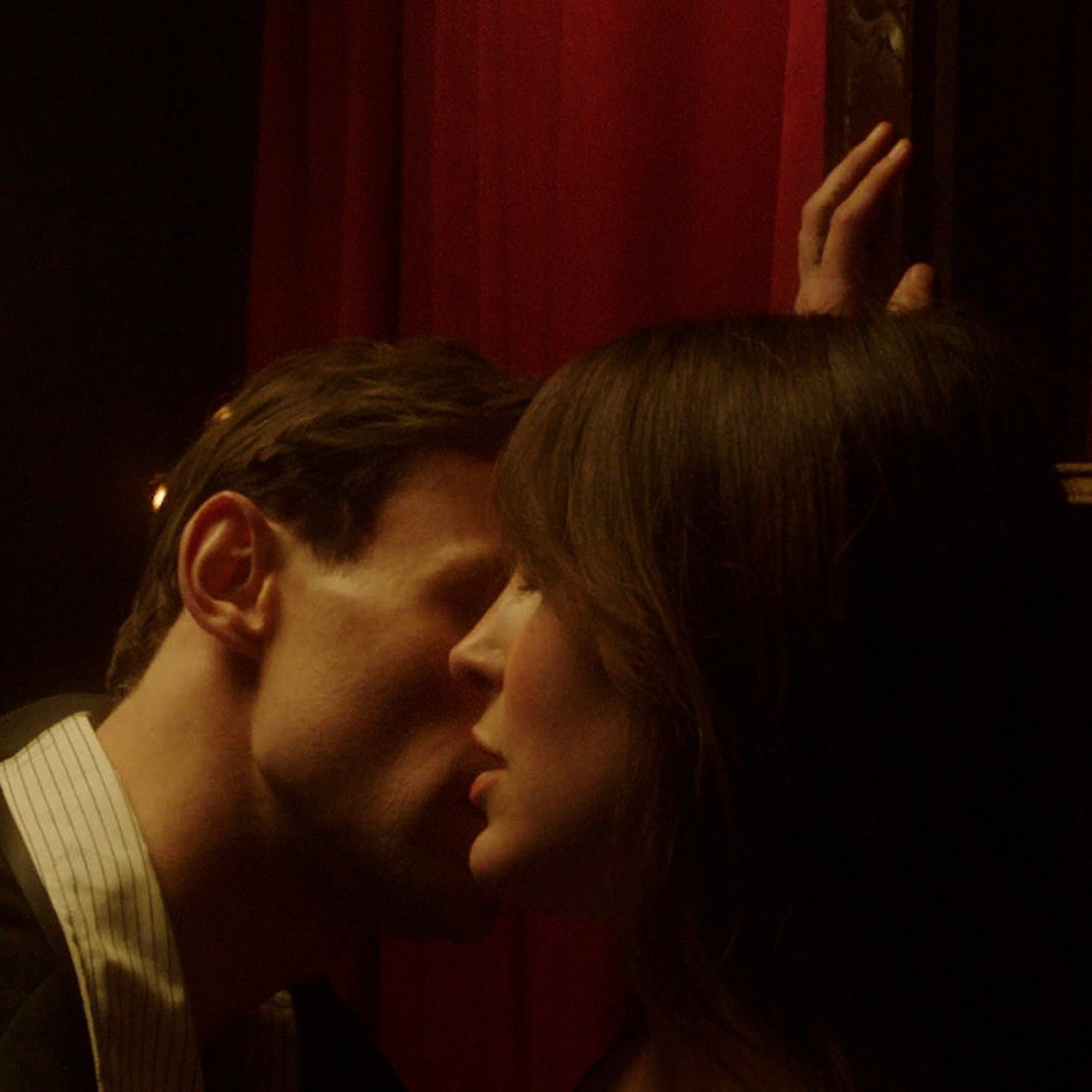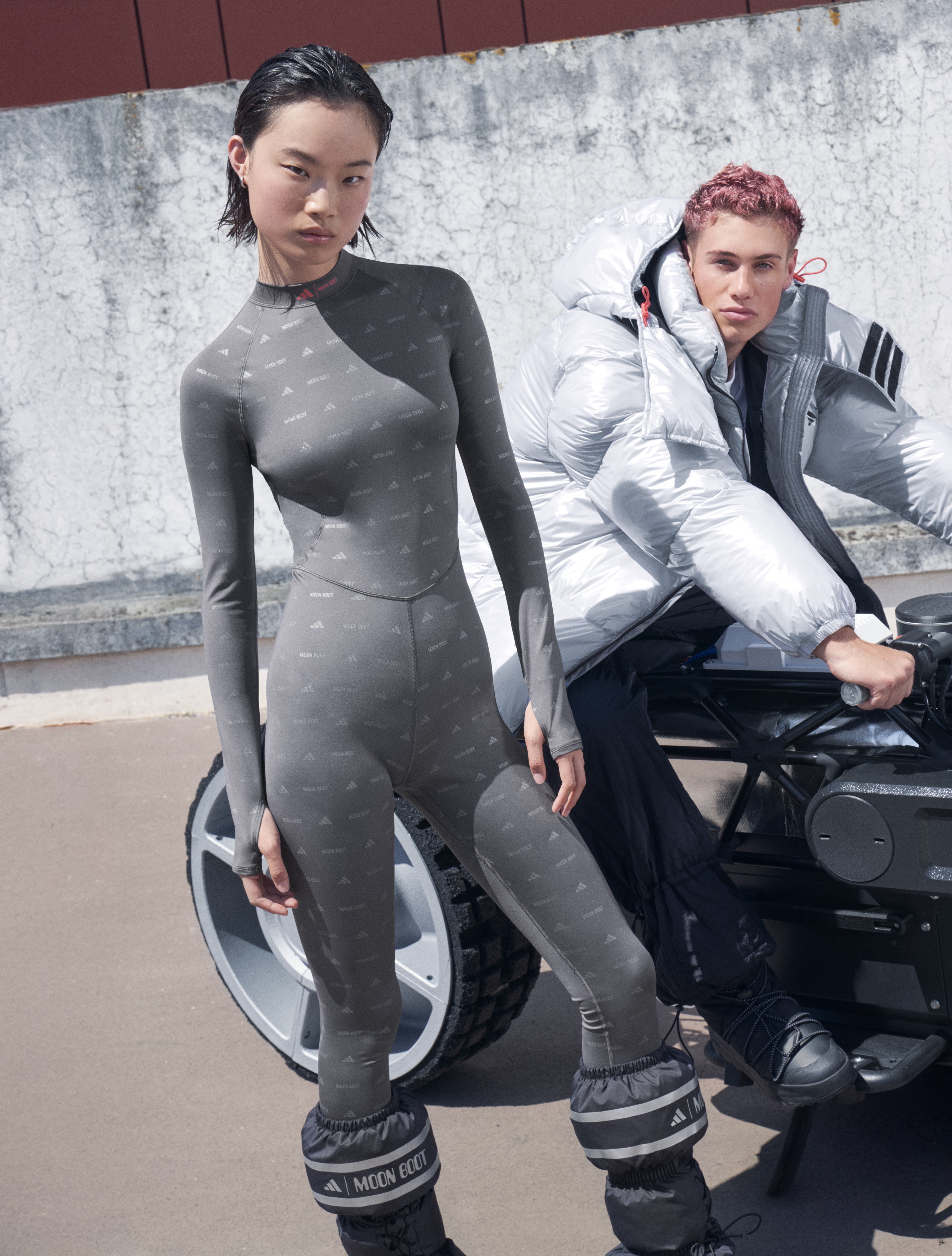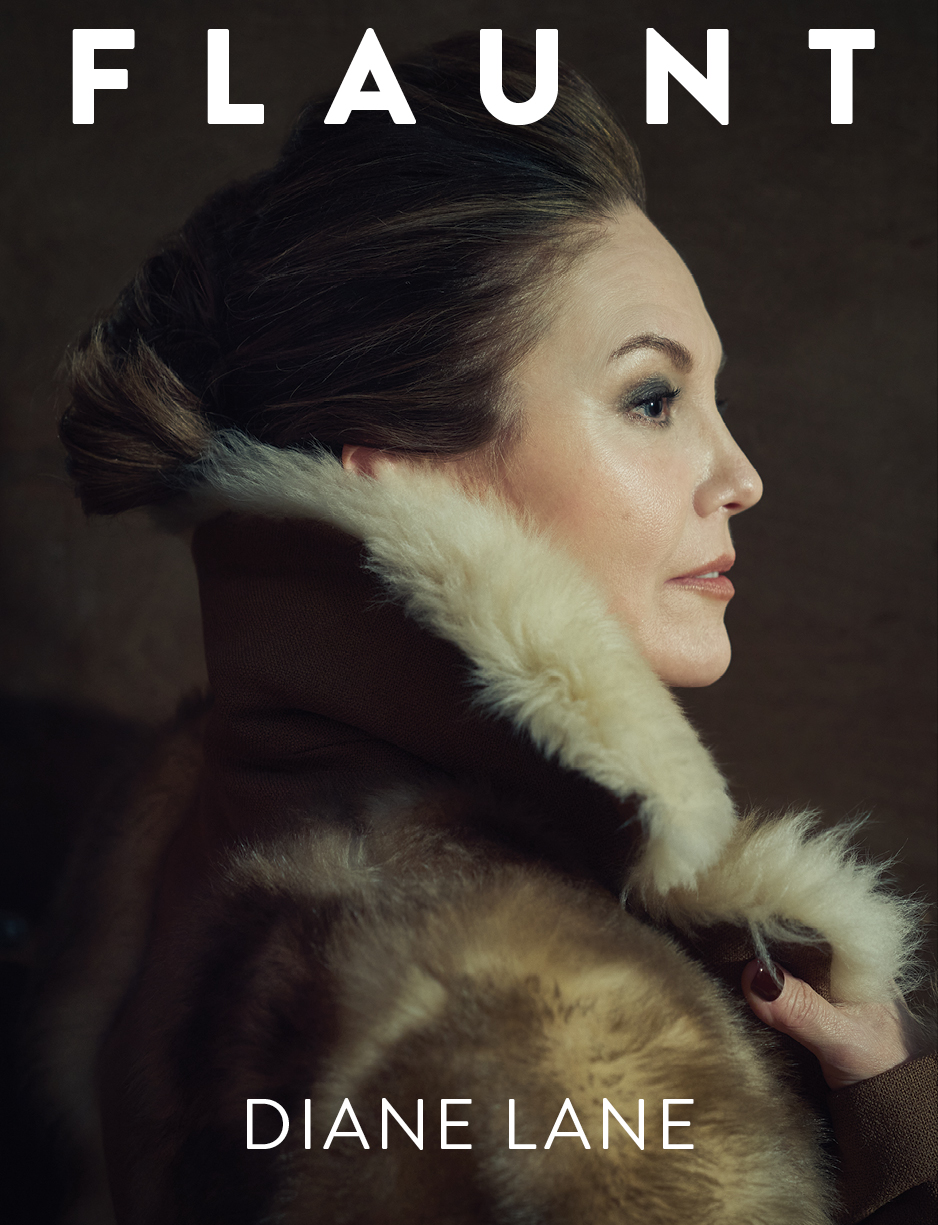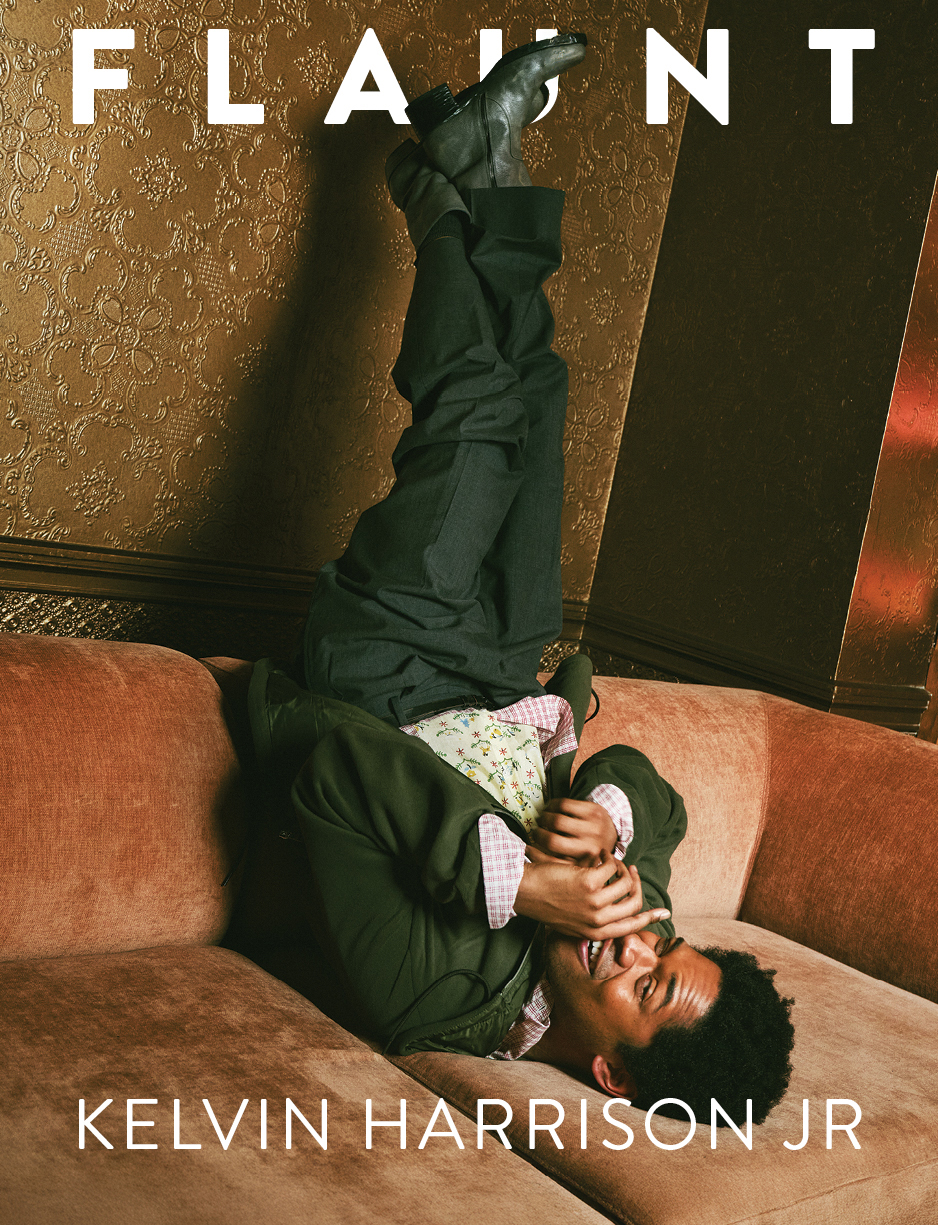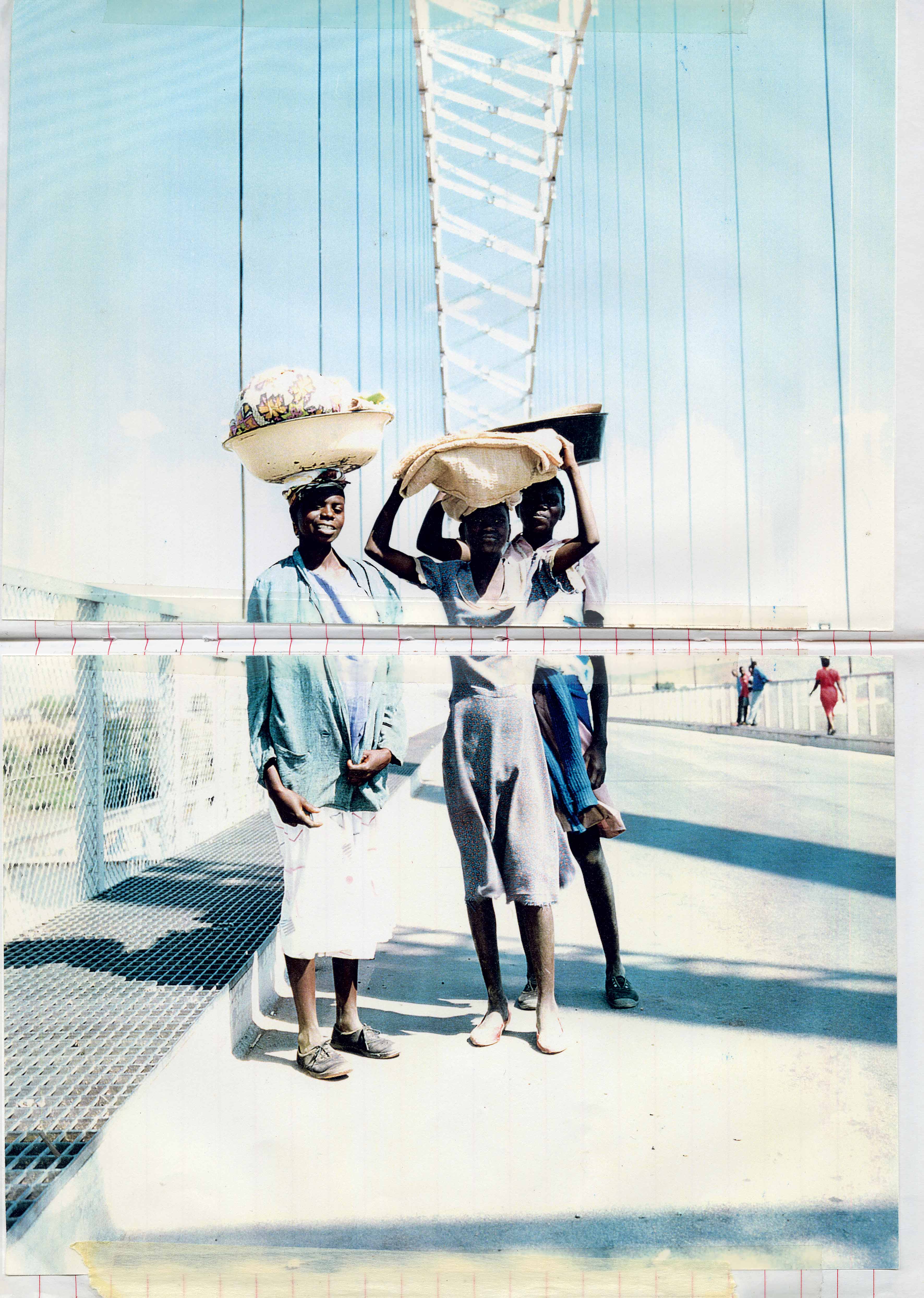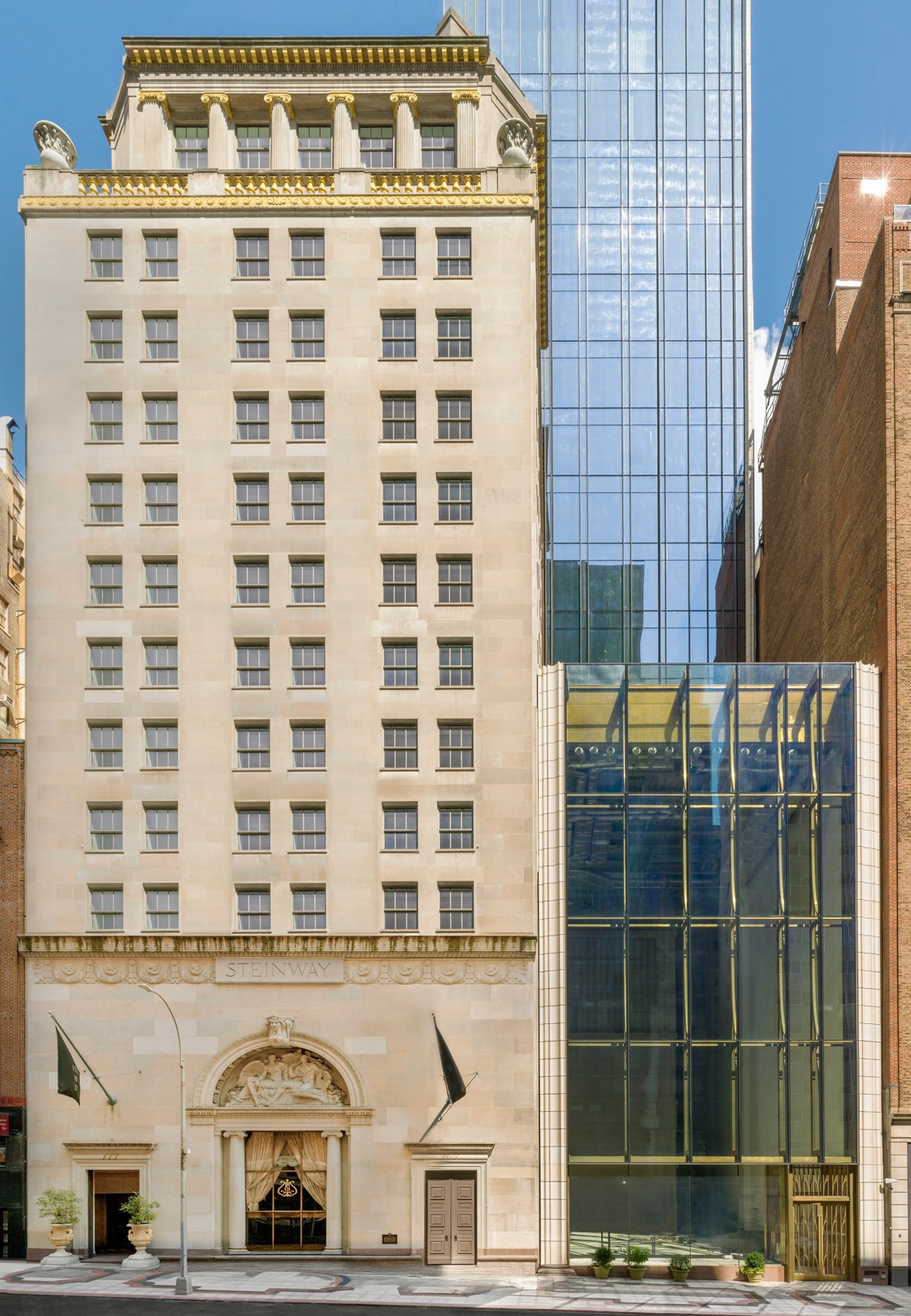

_School of Hard Knocks_ (2016). Trash can, mirror, hardware, dollar bills, Magic-Sculpt, and sand. 32 x 32 x 32 inches
* * *
“Oh my grace,” exclaims Ry Rocklen as the waiter places a sugar-dusted mountain of waffles in front of him. Upon the waiter’s suggestion, Rocklen compliantly ordered the Grand Slam, a gut-busting wildcard on an otherwise bourgeois menu at a Williamsburg-esque café in the Condesa neighborhood of Mexico City. His face is a mixture of entertainment and dismay as he explains that this isn’t the first time he has been convinced to order an obscenely "American" style dish since his arrival in Mexico.
Native to Los Angeles, his laid-back Californian attitude may be the reason he is mistaken for a grand-slam lookin’ kind of guy. But Rocklen undeniably has more refined taste than a bootleg Denny’s classic. Although the waiter missed the mark, Rocklen’s good-natured amusement with the slam hinted at something fundamental to his artistic practice: a deep-seated compassion towards the absurdities of American culture.
Grateful to sidestep the perfunctory small talk, the conversation easily turns to the reason we’re both in Mexico City: the Zona Maco Art Fair. With three sculptures on display, Rocklen first describes the piece entitled _The School of Hard Knocks_. This free-standing sculpture is a multi-punned “ode to the city of Los Angeles.” The central element of this piece is an old LA city trash can that has been “sculpted over time by the trash men and women as they are bashed against the side of the truck.” The resulting dent is adorned by epoxy-coated dollar bills that Rocklen individually threaded through the steel mesh. Rocklen explains, “There’s a kind of labor embodied in the mesh, but there’s also this insinuated labor in the treatment of the dollar bill.” The elevation of found objects such as a trash can evokes Duchampian comedy, but Rocklen’s thoughtful interventions imbue a tenderness in the details of his sculpture.
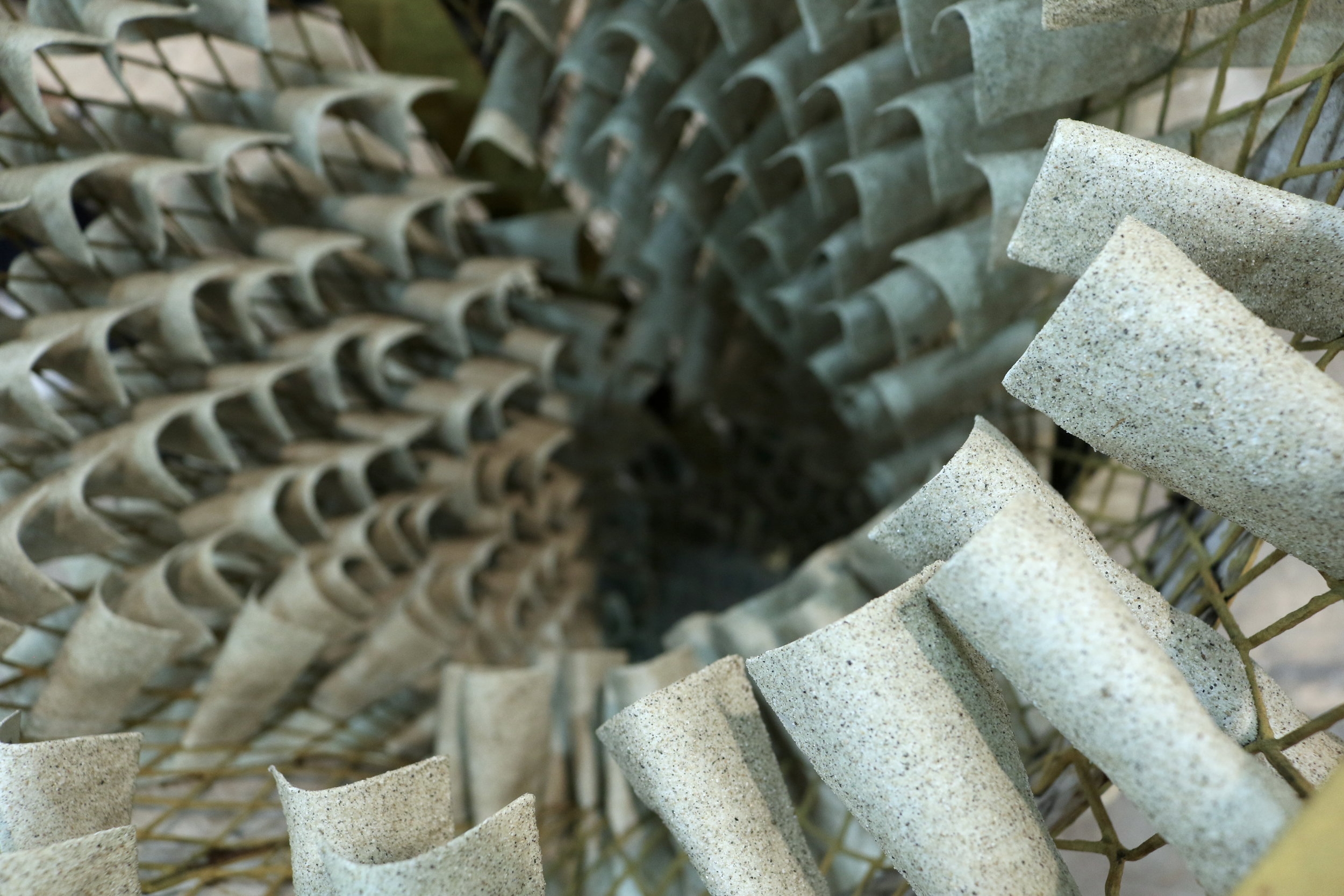
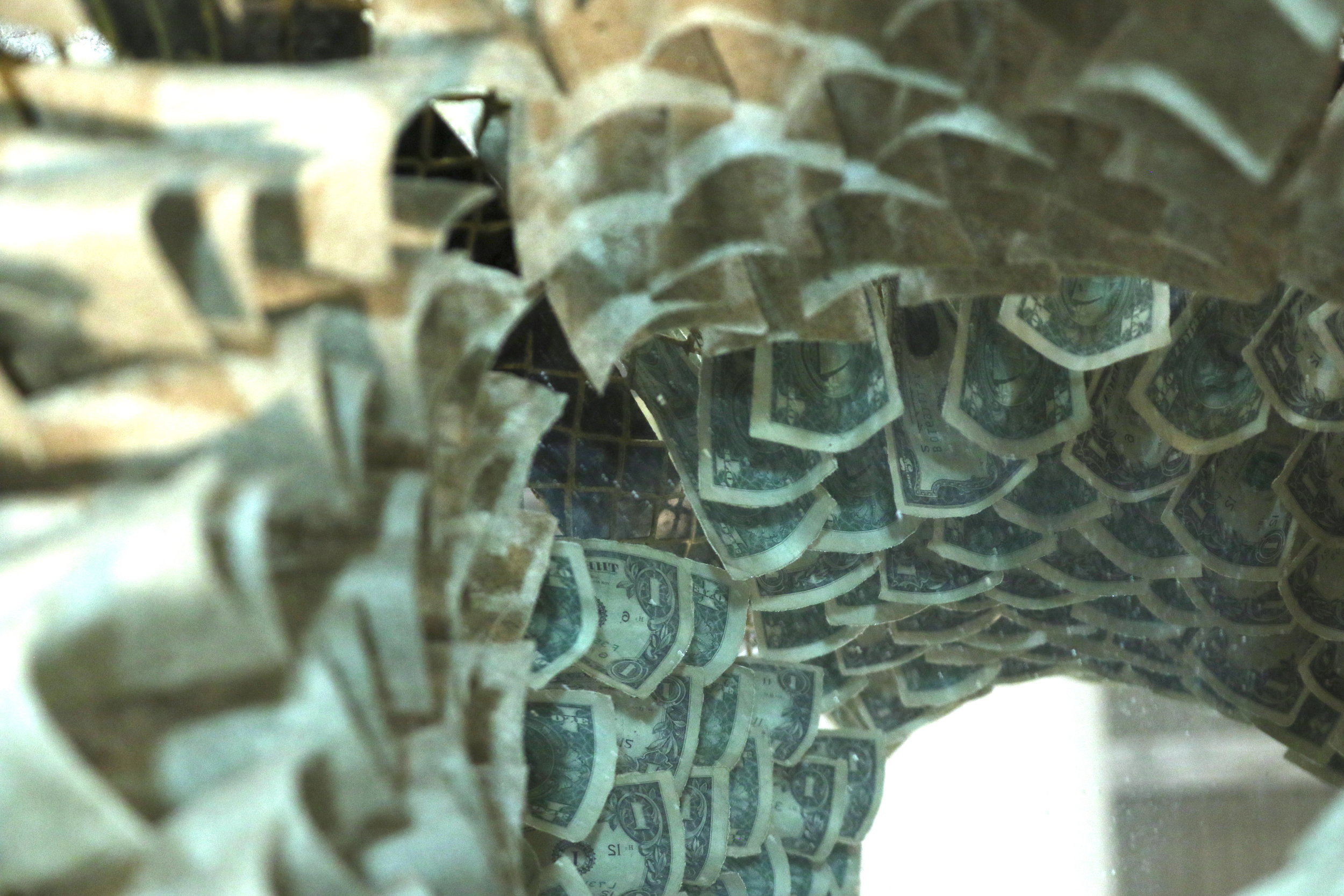
[](#)[](#)
Bested by my personal curiosity (and three strong cups of coffee), I can feel myself giving in to my biggest pet peeve: disguising a long-winded personal interpretation of an artist’s work as question. I clumsily ramble about the themes of class and hierarchy that I derived from _Hard Knocks,_ and weakly couch it with some question about class criticality at Zona Maco blah blah blah... Rocklen graciously indulges my line of questioning and runs with it. “I think there is a class thing to my work, and it’s more of a middle-class thing," he says before pausing, then laughs. “Class criticality is such a shitshow!"
“I grew up in LA," he elaborates, "so maybe the notion of middle class is kind of a fantasy. For me, living in America, that’s been one of the most upsetting aspects of our time: the complete degradation and destruction of a lot of middle class livelihoods. But, as a conceptual strategy, it’s also something I’m attracted to. I’m kind of archiving these things that are disappearing.” Together, Ry and I mourn the victims of gentrification and the beloved things it swallowed in its wake. I sheepishly avoid eye-contact with my avocado toast.


_Double Double Double_ (2017). Ceramic, glaze decals, mirror, brass hardware, and glass. 30 x 25 x 11 inches
* * *
Each Rocklen sculpture is a visual index of his affinity for the discarded artifacts scattered around Los Angeles. One day while walking on the streets of LA, Rocklen chanced upon a pair of fiberglass cheeseburgers outside a store peddling used hot dog makers and junk food machines. Attracted to the faded colors of the weather-worn whoppers, he immortalized their image in his second sculpture_, Double Double Double_. In the gallery, the burgers sit atop the shelves of a wall-mounted mirror that reflect their sculpted backsides, rendered in ceramic rope.
Explaining the menagerie of meaning behind the rope, Rocklen says, “I’m interested in the folk tradition of making things out of rope. But there is also a meaty quality to rope, like muscles; almost like a Western frontier cowboy.” I am amused at the idea of great American cowboy being dethroned by the Burger King. The comedic entanglement of food, the body, and Americana hints at a unifying theme in his work. This idea is carried through Rocklen’s third piece, _Reynold’s Wear,_ which features a shirt that Rocklen found while thrift shopping in Los Angeles. Its intentionally wrinkled texture reminded Rocklen of household tinfoil, which moved him to cast the folded shirt in aluminum. The sculpture not only functions as a kind of indexical portrait of a person, but, in allusion to the famed Reynolds wrap. “It’s like a wrapping of a human being meant for consumption." Rocklen explains. "The wearer is kind of meant to be consumed by the garment.”


_Reynolds Wear_ (2017). Cast aluminum. 12 x 12 x 1 inches
* * *
Coming out of the tradition of pop art and minimalism, Rocklen’s work reflects a Warhol-esque obsession with American iconography, but instead of focusing on seriality, he aims to unearth the “sublime individuality” in each object. It is not just _one_ coke can, it’s _this_ coke can. Each discarded object possesses some kind of mundane aura, which Rocklen attributes to an “almost mild form of animism.”
On a macro level, Rocklen elevates these everyday relics to “reclaim a sense of individuality in a post post serial industrialized whatever.” The humor in his work chastises the “benign sensibility associated with America,” but with such heartfelt amusement that it borders more on self-deprecating than political. “Like this fabulous Grand Slam I just ordered—so benign” he laughs. It is a refreshingly grounded perspective of a city that is a shape-shifting frontier of American fantasy. His practice is embedded in the philosophical position, asking the viewer to “slow down, look at this, empathize.”


Ry Rocklen
* * *
Written and photographed by Andie Eisen
Ry Rocklen (represented by Honor Fraser Gallery, Los Angeles)
 
_School of Hard Knocks_ (2016). Trash can, mirror, hardware, dollar bills, Magic-Sculpt, and sand. 32 x 32 x 32 inches
* * *
“Oh my grace,” exclaims Ry Rocklen as the waiter places a sugar-dusted mountain of waffles in front of him. Upon the waiter’s suggestion, Rocklen compliantly ordered the Grand Slam, a gut-busting wildcard on an otherwise bourgeois menu at a Williamsburg-esque café in the Condesa neighborhood of Mexico City. His face is a mixture of entertainment and dismay as he explains that this isn’t the first time he has been convinced to order an obscenely "American" style dish since his arrival in Mexico.
Native to Los Angeles, his laid-back Californian attitude may be the reason he is mistaken for a grand-slam lookin’ kind of guy. But Rocklen undeniably has more refined taste than a bootleg Denny’s classic. Although the waiter missed the mark, Rocklen’s good-natured amusement with the slam hinted at something fundamental to his artistic practice: a deep-seated compassion towards the absurdities of American culture.
Grateful to sidestep the perfunctory small talk, the conversation easily turns to the reason we’re both in Mexico City: the Zona Maco Art Fair. With three sculptures on display, Rocklen first describes the piece entitled _The School of Hard Knocks_. This free-standing sculpture is a multi-punned “ode to the city of Los Angeles.” The central element of this piece is an old LA city trash can that has been “sculpted over time by the trash men and women as they are bashed against the side of the truck.” The resulting dent is adorned by epoxy-coated dollar bills that Rocklen individually threaded through the steel mesh. Rocklen explains, “There’s a kind of labor embodied in the mesh, but there’s also this insinuated labor in the treatment of the dollar bill.” The elevation of found objects such as a trash can evokes Duchampian comedy, but Rocklen’s thoughtful interventions imbue a tenderness in the details of his sculpture.


[](#)[](#)
Bested by my personal curiosity (and three strong cups of coffee), I can feel myself giving in to my biggest pet peeve: disguising a long-winded personal interpretation of an artist’s work as question. I clumsily ramble about the themes of class and hierarchy that I derived from _Hard Knocks,_ and weakly couch it with some question about class criticality at Zona Maco blah blah blah... Rocklen graciously indulges my line of questioning and runs with it. “I think there is a class thing to my work, and it’s more of a middle-class thing," he says before pausing, then laughs. “Class criticality is such a shitshow!"
“I grew up in LA," he elaborates, "so maybe the notion of middle class is kind of a fantasy. For me, living in America, that’s been one of the most upsetting aspects of our time: the complete degradation and destruction of a lot of middle class livelihoods. But, as a conceptual strategy, it’s also something I’m attracted to. I’m kind of archiving these things that are disappearing.” Together, Ry and I mourn the victims of gentrification and the beloved things it swallowed in its wake. I sheepishly avoid eye-contact with my avocado toast.

_School of Hard Knocks_ (2016). Trash can, mirror, hardware, dollar bills, Magic-Sculpt, and sand. 32 x 32 x 32 inches
* * *
“Oh my grace,” exclaims Ry Rocklen as the waiter places a sugar-dusted mountain of waffles in front of him. Upon the waiter’s suggestion, Rocklen compliantly ordered the Grand Slam, a gut-busting wildcard on an otherwise bourgeois menu at a Williamsburg-esque café in the Condesa neighborhood of Mexico City. His face is a mixture of entertainment and dismay as he explains that this isn’t the first time he has been convinced to order an obscenely "American" style dish since his arrival in Mexico.
Native to Los Angeles, his laid-back Californian attitude may be the reason he is mistaken for a grand-slam lookin’ kind of guy. But Rocklen undeniably has more refined taste than a bootleg Denny’s classic. Although the waiter missed the mark, Rocklen’s good-natured amusement with the slam hinted at something fundamental to his artistic practice: a deep-seated compassion towards the absurdities of American culture.
Grateful to sidestep the perfunctory small talk, the conversation easily turns to the reason we’re both in Mexico City: the Zona Maco Art Fair. With three sculptures on display, Rocklen first describes the piece entitled _The School of Hard Knocks_. This free-standing sculpture is a multi-punned “ode to the city of Los Angeles.” The central element of this piece is an old LA city trash can that has been “sculpted over time by the trash men and women as they are bashed against the side of the truck.” The resulting dent is adorned by epoxy-coated dollar bills that Rocklen individually threaded through the steel mesh. Rocklen explains, “There’s a kind of labor embodied in the mesh, but there’s also this insinuated labor in the treatment of the dollar bill.” The elevation of found objects such as a trash can evokes Duchampian comedy, but Rocklen’s thoughtful interventions imbue a tenderness in the details of his sculpture.


[](#)[](#)
Bested by my personal curiosity (and three strong cups of coffee), I can feel myself giving in to my biggest pet peeve: disguising a long-winded personal interpretation of an artist’s work as question. I clumsily ramble about the themes of class and hierarchy that I derived from _Hard Knocks,_ and weakly couch it with some question about class criticality at Zona Maco blah blah blah... Rocklen graciously indulges my line of questioning and runs with it. “I think there is a class thing to my work, and it’s more of a middle-class thing," he says before pausing, then laughs. “Class criticality is such a shitshow!"
“I grew up in LA," he elaborates, "so maybe the notion of middle class is kind of a fantasy. For me, living in America, that’s been one of the most upsetting aspects of our time: the complete degradation and destruction of a lot of middle class livelihoods. But, as a conceptual strategy, it’s also something I’m attracted to. I’m kind of archiving these things that are disappearing.” Together, Ry and I mourn the victims of gentrification and the beloved things it swallowed in its wake. I sheepishly avoid eye-contact with my avocado toast.
 
_Double Double Double_ (2017). Ceramic, glaze decals, mirror, brass hardware, and glass. 30 x 25 x 11 inches
* * *
Each Rocklen sculpture is a visual index of his affinity for the discarded artifacts scattered around Los Angeles. One day while walking on the streets of LA, Rocklen chanced upon a pair of fiberglass cheeseburgers outside a store peddling used hot dog makers and junk food machines. Attracted to the faded colors of the weather-worn whoppers, he immortalized their image in his second sculpture_, Double Double Double_. In the gallery, the burgers sit atop the shelves of a wall-mounted mirror that reflect their sculpted backsides, rendered in ceramic rope.
Explaining the menagerie of meaning behind the rope, Rocklen says, “I’m interested in the folk tradition of making things out of rope. But there is also a meaty quality to rope, like muscles; almost like a Western frontier cowboy.” I am amused at the idea of great American cowboy being dethroned by the Burger King. The comedic entanglement of food, the body, and Americana hints at a unifying theme in his work. This idea is carried through Rocklen’s third piece, _Reynold’s Wear,_ which features a shirt that Rocklen found while thrift shopping in Los Angeles. Its intentionally wrinkled texture reminded Rocklen of household tinfoil, which moved him to cast the folded shirt in aluminum. The sculpture not only functions as a kind of indexical portrait of a person, but, in allusion to the famed Reynolds wrap. “It’s like a wrapping of a human being meant for consumption." Rocklen explains. "The wearer is kind of meant to be consumed by the garment.”

_Double Double Double_ (2017). Ceramic, glaze decals, mirror, brass hardware, and glass. 30 x 25 x 11 inches
* * *
Each Rocklen sculpture is a visual index of his affinity for the discarded artifacts scattered around Los Angeles. One day while walking on the streets of LA, Rocklen chanced upon a pair of fiberglass cheeseburgers outside a store peddling used hot dog makers and junk food machines. Attracted to the faded colors of the weather-worn whoppers, he immortalized their image in his second sculpture_, Double Double Double_. In the gallery, the burgers sit atop the shelves of a wall-mounted mirror that reflect their sculpted backsides, rendered in ceramic rope.
Explaining the menagerie of meaning behind the rope, Rocklen says, “I’m interested in the folk tradition of making things out of rope. But there is also a meaty quality to rope, like muscles; almost like a Western frontier cowboy.” I am amused at the idea of great American cowboy being dethroned by the Burger King. The comedic entanglement of food, the body, and Americana hints at a unifying theme in his work. This idea is carried through Rocklen’s third piece, _Reynold’s Wear,_ which features a shirt that Rocklen found while thrift shopping in Los Angeles. Its intentionally wrinkled texture reminded Rocklen of household tinfoil, which moved him to cast the folded shirt in aluminum. The sculpture not only functions as a kind of indexical portrait of a person, but, in allusion to the famed Reynolds wrap. “It’s like a wrapping of a human being meant for consumption." Rocklen explains. "The wearer is kind of meant to be consumed by the garment.”
 
_Reynolds Wear_ (2017). Cast aluminum. 12 x 12 x 1 inches
* * *
Coming out of the tradition of pop art and minimalism, Rocklen’s work reflects a Warhol-esque obsession with American iconography, but instead of focusing on seriality, he aims to unearth the “sublime individuality” in each object. It is not just _one_ coke can, it’s _this_ coke can. Each discarded object possesses some kind of mundane aura, which Rocklen attributes to an “almost mild form of animism.”
On a macro level, Rocklen elevates these everyday relics to “reclaim a sense of individuality in a post post serial industrialized whatever.” The humor in his work chastises the “benign sensibility associated with America,” but with such heartfelt amusement that it borders more on self-deprecating than political. “Like this fabulous Grand Slam I just ordered—so benign” he laughs. It is a refreshingly grounded perspective of a city that is a shape-shifting frontier of American fantasy. His practice is embedded in the philosophical position, asking the viewer to “slow down, look at this, empathize.”

_Reynolds Wear_ (2017). Cast aluminum. 12 x 12 x 1 inches
* * *
Coming out of the tradition of pop art and minimalism, Rocklen’s work reflects a Warhol-esque obsession with American iconography, but instead of focusing on seriality, he aims to unearth the “sublime individuality” in each object. It is not just _one_ coke can, it’s _this_ coke can. Each discarded object possesses some kind of mundane aura, which Rocklen attributes to an “almost mild form of animism.”
On a macro level, Rocklen elevates these everyday relics to “reclaim a sense of individuality in a post post serial industrialized whatever.” The humor in his work chastises the “benign sensibility associated with America,” but with such heartfelt amusement that it borders more on self-deprecating than political. “Like this fabulous Grand Slam I just ordered—so benign” he laughs. It is a refreshingly grounded perspective of a city that is a shape-shifting frontier of American fantasy. His practice is embedded in the philosophical position, asking the viewer to “slow down, look at this, empathize.”
 
Ry Rocklen
* * *
Written and photographed by Andie Eisen
Ry Rocklen (represented by Honor Fraser Gallery, Los Angeles)

Ry Rocklen
* * *
Written and photographed by Andie Eisen
Ry Rocklen (represented by Honor Fraser Gallery, Los Angeles)
